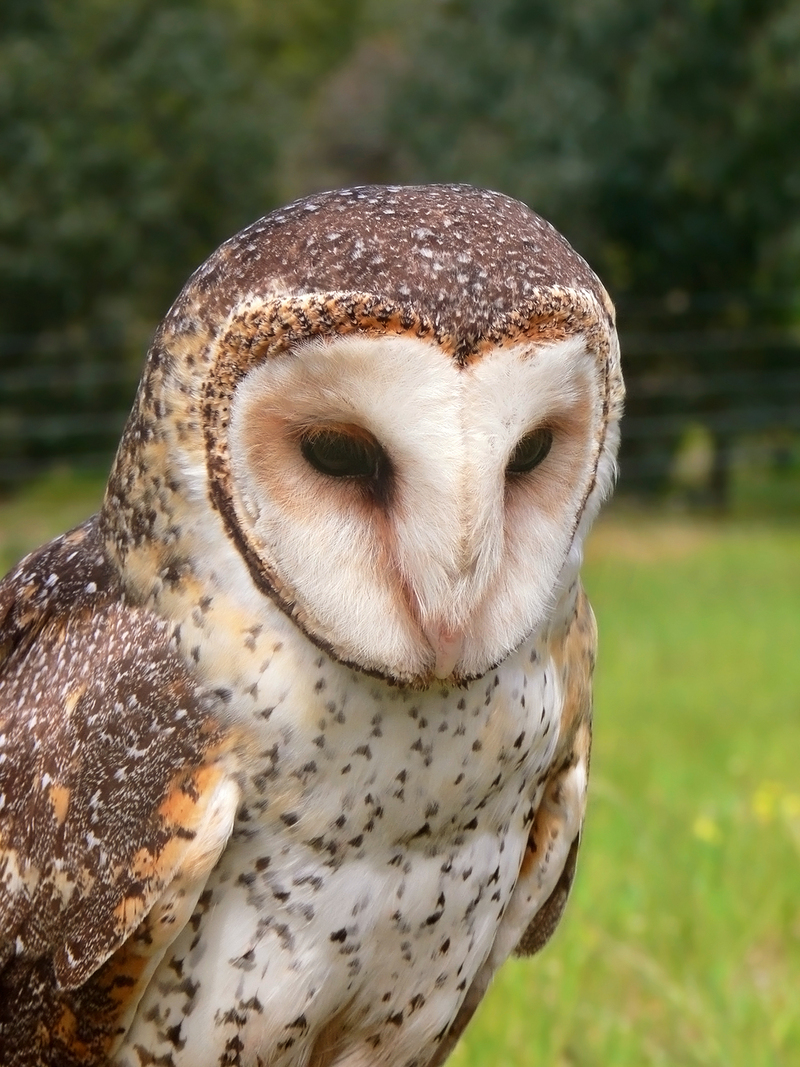|
| Query: Madagascar owl | Result: 5th of 19 | |
Family: Tytonidae (Barn-owls, Masked Owls) - Wiki
| Subject: | Family: Tytonidae (Barn-owls, Masked Owls) - Wiki
| |

| Resolution: 1250x1667
File Size: 1338189 Bytes
Date: 2007:10:13 12:47:21
Camera: DMC-FZ30 (Panasonic)
F number: f/2.8
Exposure: 10/4000 sec
Focal Length: 351/10
Upload Date: 2007:11:17 11:20:16
|
Tytonidae
From Wikipedia, the free encyclopedia
Scientific classification
Kingdom: Animalia
Phylum: Chordata
Class: Aves
Order: Strigiformes
Family: Tytonidae (Ridgway, 1914)
Genera: Tyto, Phodilus
[Photo] Australian Masked owl (Tyto novaehollandiae), taken at a Traveling Raptor flight display in south-eastern Australia. Date 13 October 2007. Author Benjamint444 (http://commons.wikimedia.org/wiki/User:Benjamint444) | Permission is granted to copy, distribute and/or modify this document under the terms of the GNU Free Documentation License, Version 1.2 or any later version published by the Free Software Foundation; with no Invariant Sections, no Front-Cover Texts, and no Back-Cover Texts. A copy of the license is included in the section entitled "GNU Free Documentation License". |
Barn-owls (family Tytonidae) are one of the two families of owls, the other being the typical owls, Strigidae. They are medium to large sized owls with large heads and characteristic heart-shaped faces. They have long strong legs with powerful talons. They also differ in structural details relating in particular to the sternum and feet.
The barn owls comprise two extant sub-families: the Tytoninae or Tyto owls (including the Common Barn Owl) and the Phodilinae or bay-owls. The Sibley-Ahlquist taxonomy unites the Caprimulgiformes with the owl order; here, the barn-owls are a subfamily Tytoninae. This is unsupported by more recent research (see Cypselomorphae), but the relationships of the owls in general are still unresolved.
The barn owls are a wide ranging family, absent only from northern North America, Saharan Africa and large areas of Asia. They live in a wide range of habitats from deserts to forests, and from temperate latitudes to the tropics. The majority of the 16 living species of barn owls are poorly known. Some, like the Madagascar Red Owl, have barely been seen or studied since their discovery, in contrast to the Common Barn Owl, which is one of the best known owl species in the world. However, some sub-species of the Common Barn Owl possible deserve to be a species, and are very poorly known.
Five species of barn-owl are threatened, and some island species have gone extinct during the Holocene or earlier (e.g. Tyto pollens, known from the fossil record of Andros Island, and possibly the basis for the Chickcharnie). The barn-owls are mostly nocturnal, and generally non-migratory, living in pairs or singly.
Description
The barn-owls' main characteristic is the heart-shaped facial disc, formed by stiff feathers which serve to amplify and locate the source of sounds when hunting. Further adaptations in the wing feathers eliminate sound caused by flying, aiding both the hearing of the owl listening for hidden prey and keeping the prey unaware of the owl. Barn-owls overall are darker on the back than the front, usually an orange-brown colour, the front being a paler version of the back or mottled, although there is considerable variation even amongst species. The bay-owls closely resemble the Tyto owls but have a divided facial disc, ear tufts, and tend to be smaller.
Species
The fossil record of the barn-owls goes back to the Eocene, with the family eventually losing ground to the true owls after the radiation of rodents and owls during the Neogene epoch . Two subfamilies are only known from the fossil record, the Necrobyinae and the Selenornithinae. Numerous extinct species of Tyto have been described;
Genus Tyto
Greater Sooty-owl, Tyto tenebricosa
Lesser Sooty-owl, Tyto multipunctata
Australian Masked-owl, Tyto novaehollandiae
- Cave-nesting Masked Owl, Tyto novaehollandiae troughtoni - disputed; probably extinct (1960s)
Golden Masked-owl, Tyto aurantia
Lesser Masked-owl, Tyto sororcula
- Buru Masked-owl, Tyto (sororcula) cayelii - possibly extinct (mid-20th century?)
Manus Masked-owl, Tyto manusi
Taliabu Masked-owl, Tyto nigrobrunnea
Minahassa Masked-owl, Tyto inexspectata
Sulawesi Owl, Tyto rosenbergii
- Peleng Masked Owl, Tyto rosenbergii pelengensis - probably extinct (mid-20th century)
Barn Owl, Tyto alba
- Eastern Barn Owl, Tyto (alba) delicatula
Ashy-faced Owl, Tyto glaucops
Madagascar Red Owl Tyto soumagnei
African Grass-owl Tyto capensis
Australasian Grass-owl Tyto longimembris
Genus Phodilus
Oriental Bay-owl Phodilus badius
- Samar Bay-owl Phodilus (badius) riverae - probably extinct (mid-20th century)
Congo Bay-owl, Phodilus prigoginei - sometimes placed in Tyto
Fossil genera
Nocturnavis (Late Eocene/Early Oligocene) - includes "Bubo" incertus
Necrobyas (Late Eocene/Early Oligocene - Late Miocene) - includes "Bubo" arvernensis and Paratyto
Selenornis (Late Eocene/Early Oligocene of Quercy, France) - includes "Asio" henrici
Prosybris (Late Eocene/Early Oligocene of Quercy? - Early Miocene of France)
Placement of the Late Eocene/Early Oligocene genera Palaeotyto and Palaeobyas from Quercy (France) in this family is tentative; they might belong to the Sophiornithidae instead.
The supposed "giant barn-owl" Basityto from the Early Eocene of Grafenm??hle (Germany) was actually a crowned crane (Balearica); the presumed "Easter Island Barn-owl", based on subfossil bones found on Rapa Nui, has turned out to be some procellarid (Steadman, 2006).
http://en.wikipedia.org/wiki/Tytonidae
| The text in this page is based on the copyrighted Wikipedia article shown in above URL. It is used under the GNU Free Documentation License. You may redistribute it, verbatim or modified, providing that you comply with the terms of the GFDL. |
|
^o^
Animal Pictures Archive for smart phones
^o^
|
|

